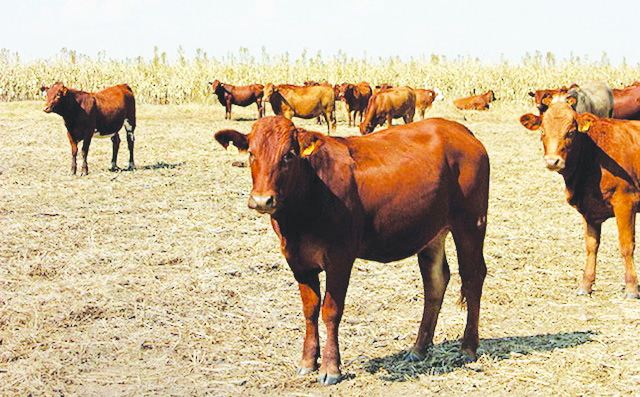THE inability by the country to produce enough animal feed and supplements led to cattle producers running to abattoirs during droughts to sell their livestock before they die.
Then after rains, they restock, a process that takes time and affects the supply and affordability of beef in the country.
In the three year drought the country experienced, cattle producers de-stocked more than a million cattle according to the latest Meat Board of Namibia (MBN) newsletter.
“After a persistent drought saw more than 1 362 364 million cattle marketed during 2017-2019 a slow-down of more than half was recorded in 2020,” the newsletter revealed.
The Meatboard added: “This resulted in producers entering into a herd-building season after the drought-induced marketing activity over the past three years”.
The board explained that with limited slaughtering, prices are expected to increase as Namibia will find it difficult to satisfy demands, “although the Norwegian quota is expected to receive priority”.
The newsletter also highlighted that the 2021 producer prices are in all cases higher than those of 2020.
Due to low supplies from local producers, especially those on the south of the redline, Botswana was identified as such a source due to their similar environmental conditions and a foot-and-mouth disease-free zone.
This is after the Botswana government temporarily lifted a moratorium on live exports, and Namibian abattoirs may take advantage thereof.
However, only male animals may be imported from Botswana’s FMD zone, subject to strict requirements set by the Namibian Directorate of Veterinary Services.
From a preliminary application for 1 904 cattle, 1 389 have already been imported for slaughter at local abattoirs.
Total marketing of cattle declined by 39,84% during the first quarter of 2021 where 41 842 cattle were marketed compared to 69 550 during the corresponding quarter of 2020.
From the total cattle marketed, 61% were live exports, as producers opt for weaner exports to South Africa.
While 22% were taken up by export abattoirs, B&C class abattoirs enjoyed 17% of the market share, the Meat Board revealed.
Up to 98% of all live cattle exported were sent to South Africa (25 129 animals out of 25 650) with Angola taking up 2% (521 animals) of live exports.
“Of these live cattle exports, 99% were weaners (the general categorisation of weaners includes steers and heifers) and these were destined for South African feedlots, while the remainder constituted only 1% of live exports,” says the Meat Board.
This is despite Namibian weaner prices increasing by 23,13% during the first quarter of 2021 compared to 2020, while South African weaner prices increased by 22,12%.
On average Namibian weaners traded at N$41,66 per kg during the first quarter of 2021.
This is N$3,76 per kg higher than South African weaners, which could be discouraging the demand for Namibian weaners from the neighbouring country, although the live export numbers tell a different story.
THE NORTHERN CASE
While the south scrambles for cattle, the northern side of the redline has around 1,7 million cattle, according to Meatco’s annual report, with no market except for use during burials, weddings, and sale at kapana stalls.
The Meatboard said: “It was concluded that for the short term, all efforts should focus on the commodity-based trade process”.
This is due to various reasons, mainly the available infrastructure that already exists and costs to bring beef exports to enhanced yield markets in the short term, the newsletter read.
In the long-term, the creation of a new foot-and-mouth disease (FMD) and cattle lung disease (CBPP) free zone within the current FMD protection zone (north of the redline) can be considered.
“Other options such as the erection of a border fence on the Namibia-Angola border, as well as the creation of an FMD and CBPP free compartment, were considered less practical and too expensive, the board revealed.
They added that the fence will remain, regardless.
“Regardless of which option is followed, the preservation of the integrity of the cordon fence, the maintenance of the quarantine farms and camps north of the redline, and an effective vaccination programme against FMD remain crucial,”


